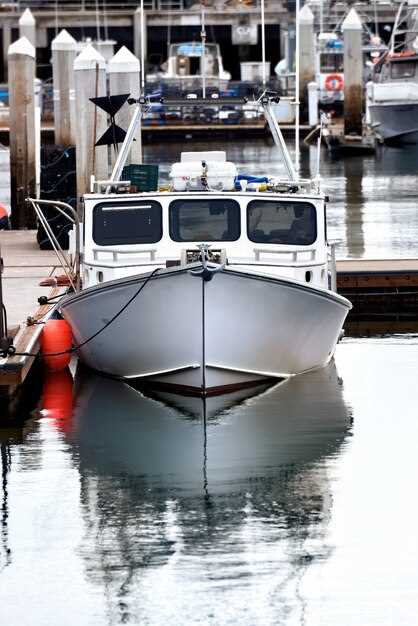Tips for long-term boat storage

Storing a boat for an extended period requires careful planning and proper maintenance to ensure it remains in optimal condition. Whether you’re preparing for winter hibernation or an extended hiatus from the water, understanding the intricacies of boat storage can save you time and money in the long run. This article will explore essential tips that every boat owner should consider.
First and foremost, maintenance is key when it comes to long-term boat storage. This includes thorough cleaning, checking for any necessary repairs, and addressing issues that could worsen over time. When you take the time to properly maintain your boat before storage, you can prevent corrosion, mold, and other damage that may arise in neglected vessels.
Additionally, one of the most critical aspects of boat storage is ensuring that it is stored in a suitable environment. Factors such as humidity, temperature fluctuations, and exposure to the elements can significantly impact the integrity of your boat. Taking these considerations into account will help you make informed decisions about how and where to store your boat for the long haul.
Preparing Your Boat for Long-Term Storage

Proper preparation is essential for ensuring your boat remains in excellent condition during long-term storage. Begin by thoroughly cleaning the boat, removing any dirt, debris, and salt deposits. Pay special attention to the hull, deck, and interior, as accumulated grime can cause damage over time.
Next, perform necessary maintenance tasks. Change the oil and replace the oil filter to prevent contaminants from corroding the engine. Additionally, flush the cooling system and replace the coolant to avoid scaling and corrosion during storage. Inspect and clean the fuel system, adding a fuel stabilizer to prevent sediment formation and phase separation.
Check the battery and clean the terminals, ensuring it’s fully charged before disconnection. Store the battery in a cool, dry place, and consider utilizing a trickle charger if long storage lasts more than a few months.
For safety, ensure all safety equipment, such as life jackets and fire extinguishers, are in good condition and properly stored. Remove valuable items and personal belongings to prevent theft or damage.
Finally, cover your boat with a high-quality cover that fits securely. This helps protect it from environmental elements like dirt, moisture, and UV rays. By following these steps for maintenance and preparation, you’ll ensure that your boat will emerge from storage ready for action when the time comes to hit the water again.
Choosing the Right Storage Environment

When it comes to long-term boat storage, selecting the appropriate environment is crucial for maintaining your vessel’s condition. Various factors must be considered to ensure your boat remains protected from potential damage during its time in storage.
Indoor Storage is often the best option, as it provides a controlled environment away from the elements. Indoor facilities help prevent exposure to moisture, UV rays, and temperature fluctuations. Look for a climate-controlled storage unit to further shield your boat from humidity and extreme temperatures, which can lead to mold growth and corrosion.
On the other hand, outdoor storage may be a more affordable choice, but it necessitates additional precautions. If you opt for outdoor storage, choose a location with good drainage to avoid standing water that can promote rust and decay. Using a high-quality cover specifically designed for boats is essential to keep moisture and dirt out while allowing air circulation.
Another aspect to consider is security. Regardless of your storage choice, ensure that the facility has adequate security measures in place, such as surveillance cameras, gates, and monitored access. This will help to protect your investment from theft or vandalism.
Lastly, consider the proximity of the storage location to your home or launch site. Choosing a storage environment that is easily accessible can save you time and effort during the boating season when you wish to retrieve your boat for use.
By evaluating these factors–indoor versus outdoor options, security measures, and proximity–you can choose the right storage environment that will keep your boat safe and in prime condition during its long-term storage period.
Essential Maintenance Tasks Before and After Storage
Prior to placing your boat in storage, thorough maintenance is crucial to ensure its longevity and functionality. Start by cleaning the entire exterior to remove salt, grime, and other debris that could cause corrosion. Next, inspect the hull for scratches or damage, applying a protective wax coat to safeguard against environmental elements during storage.
Drain all systems, including the engine and water tanks, to prevent freezing and deterioration. It’s essential to change the oil and replace oil filters to eliminate contaminants. Treat the fuel with a stabilizer to prevent degradation and clogging in the fuel system. Don’t forget to remove and check the battery; clean terminals and store it in a dry location.
Inside the boat, remove any perishable items and clean the interior thoroughly to avoid mold and odors. Cover upholstery to protect it from dust and deterioration.
After removing your boat from storage, perform a comprehensive inspection. Start by checking the engine fluids and battery. Replace any filters or fluids that may have degraded during storage. Inspect the hull and deck for any signs of wear or damage that may have occurred over time.
Before launching, test all systems, including electronics, navigation equipment, and plumbing. Cleaning and detailing the interior and exterior again is recommended to ensure everything is ready for use. Completing these maintenance tasks before and after storage will help maintain your boat’s performance and extend its lifespan.




